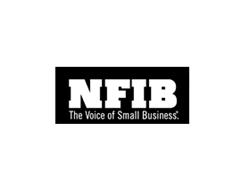Small Business Optimism Rises in September
The National Federation of Independent Business said its small business index for last month rose 1 point to 97.3, but has stayed below its base year value of 100 all year, reflecting the sub-par growth in the economy.
Small business spending has perked up with 60% of the firms reporting increased capital outlays over the past six months, while 29% of the firms plan to make expenditures over the next few months, NFIB said.
Fourteen percent of the firms said this was a good time to expand, up two points from August.
Only 3% of the owners cited the cost and availability of credit as their top business problem, far from the record 37% reached in 1982, NFIB said.
Thirty-seven percent reported all their credit needs were met compared to five percent who reported problems obtaining desired financing, NFIB said.
At the same time, the percentage of owners reporting loans harder to get in recent months has risen to a net 9%, the highest reading in 14 years.
"Perhaps the "tightening" we heard about on Wall Street is leaking out into the countryside," said William Dunkelberg, NFIB's chief economist. "But it certainly isn't severe."
Small companies have been somewhat unsuccessful in trying to fill jobs. Earlier this month, a government data showed that
But according to NFIB, many of those payroll jobs were in medical care, education and government -- industries not dominated by small firms.
Fifty-seven percent of the firms surveyed said they hired or tried to hire new workers, up four points since August, but 84% of those trying to hire reported few or no qualified applicants, NFIB said.
Some 17% of the small firms polled have also reported higher earnings.
"Since labor costs are the largest business cost for most firms and fewer firms are passing these costs on to customers, the improvement in profit trends is surprising," Dunkelberg said.
Of the 31% reporting lower earnings compared to the previous three months, 10% blamed higher labor costs.
"Rising labor costs and the apparent increasing inability to pass costs on through higher selling prices will continue to threaten profits," Dunkelberg said.
But more capital spending may soften the picture by raising worker productivity and reducing unit labor costs. said Dunkelberg. "It's a race."
Related Topics:RD Weis
